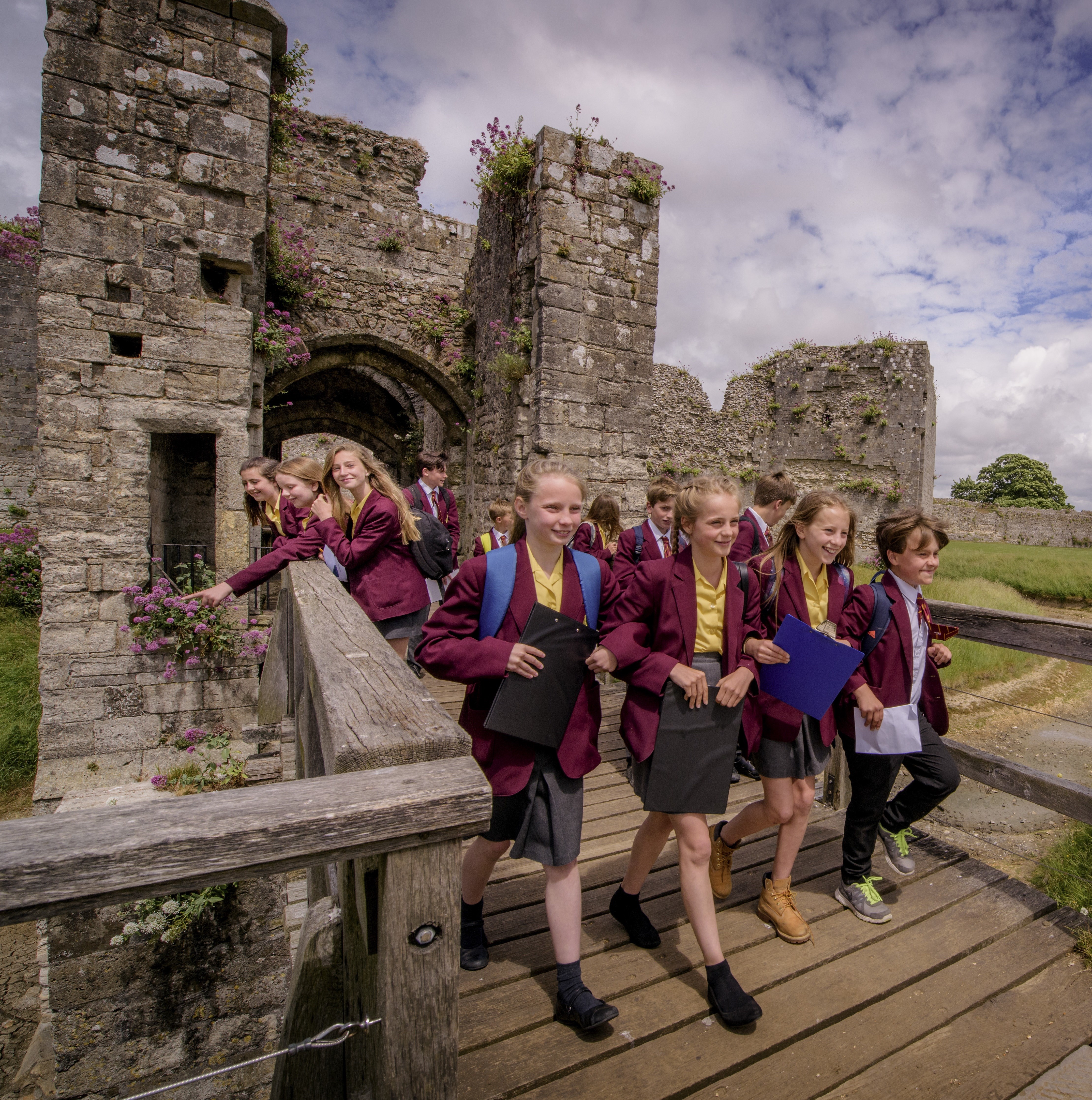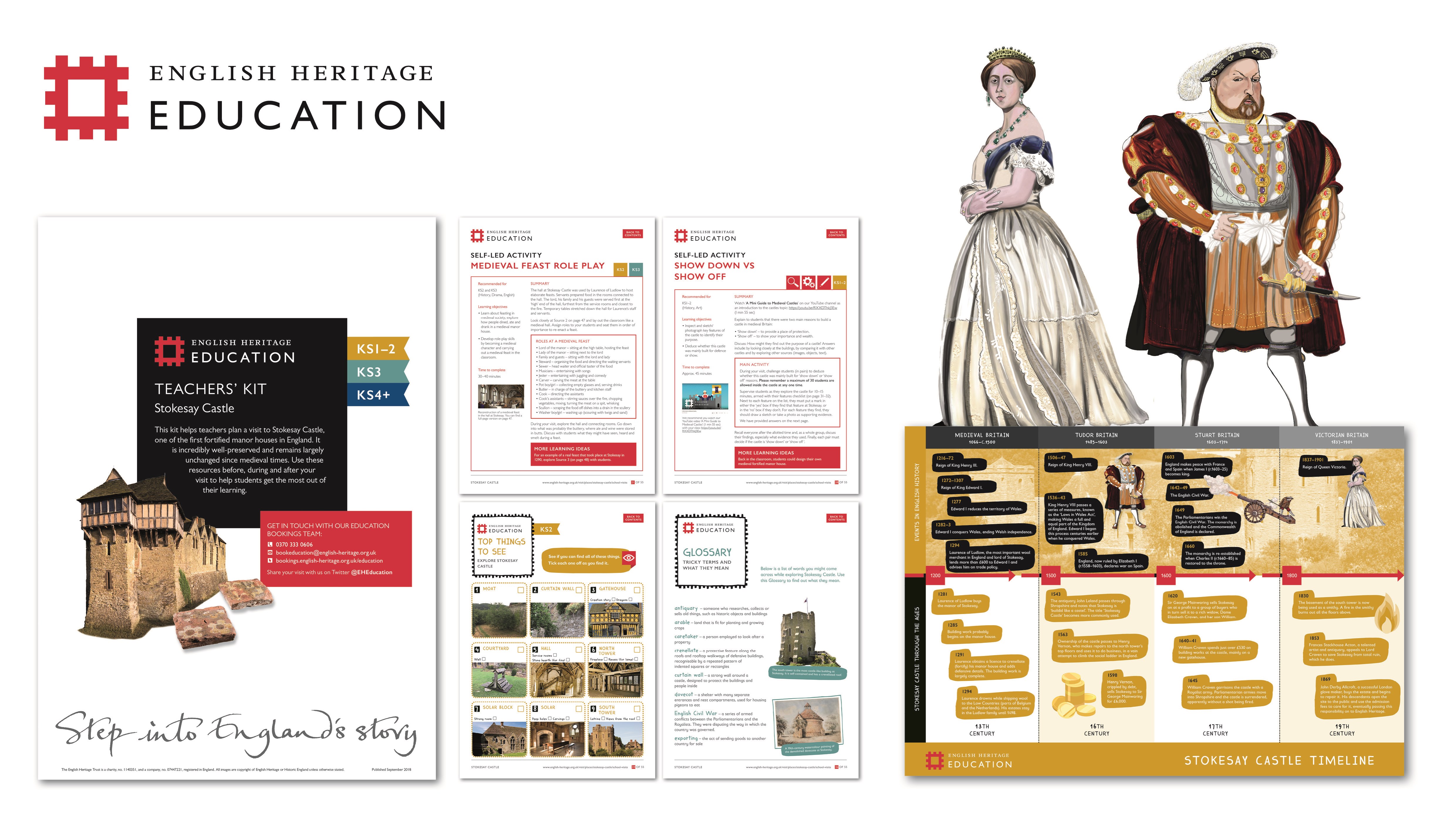Get to Grips with the Area
There's been a settlement in the Carisbrooke area since Roman times. We know from archaeological evidence that there was a Roman villa in the town. Three people were buried on the hill in the 6th century, where the castle was later built. The Isle of Wight's location off the south coast of England made it an ideal base for Danish raiders to attack the mainland, mainly in the early 11th century. Parts of the stone-walled fort that was built at this time survive under later earthworks. These were possibly built by Anglo-Saxons as a fortification against the Danes.
Many English monarchs have granted control of the Isle of Wight to their loyal supporters to control, administer and strengthen England's defences. It has also passed between aristocrats as part of their wider estates. After the Battle of Hastings, William the Conqueror (r.1066-87) granted the Isle of Wight to his cousin, and later Henry I (r.1100-35) granted it to a loyal supporter, Richard de Redvers. It was probably Richard who built the first Norman castle at Carisbrooke, but his son Baldwin replaced it with a motte and bailey castle, strengthening the castle with stone walls.
Baldwin's great-great-granddaughter, Isabella de Fortibus, expanded the castle when she inherited it at the age of 25, in 1263. During the Hundred Years War (1337-1453) the Isle of Wight was frequently involved in the fighting between England and France and in 1377 the French besieged Carisbrooke Castle, but failed to break in. The continuing French wars prompted improvements to the castle defences, including the drum towers around the main gatehouse.
The Isle of Wight and Carisbrooke Castle remained important to the security of England during the 15th and 16th centuries. The castle defences were improved with artillery and totally transformed by the building of a huge artillery fort by 1602, in response to the continuing threat of a major Spanish attack. After peace with Spain in 1604, Carisbrooke was not used as a major fortification, but kept a small garrison. At the start of the English Civil War (1642-51), it was secured by the Parliamentarians and saw no action. The castle was primarily used as a prison and its most famous prisoner was Charles I who was imprisoned at the castle between November 1647 and September 1648.
During the 18th and 19th centuries, the Royal Navy, together with more powerful forts on the south coast of the mainland, became more important to Britain's defence. Carisbrooke's inland location meant that it was no longer considered a vital military fortification. By the mid-1800s the island had become a popular tourist destination and the ageing Carisbrooke Castle one of its attractions. Visitors came to view and explore the romantic ruins.The castle was sometimes used as a residence by the governors of the Isle of Wight. The last person to use Carisbrooke Castle as a residence was Queen Victoria's youngest daughter, Princess Beatrice, who became governor after the death of her husband in 1896. She lived at the castle during most summers between 1913 and 1944, repaired and remodelled some of the castle buildings and created a garden within its walls.
Top Resources
-

Carisbrooke Castle Teachers' Kit (KS1-KS4+)
Use the historical information, glossary, timeline and sources in this teachers' kit to find out more about Carisbrooke Castle's history.
-
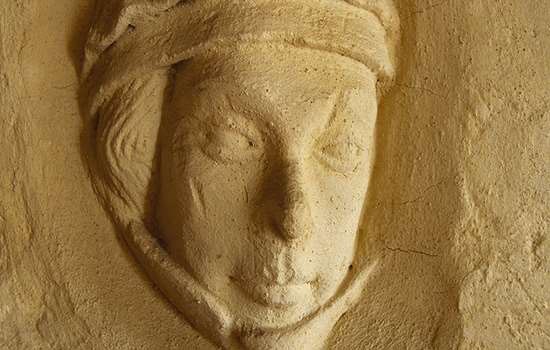
Isabella de Fortibus
Isabella de Fortibus was one of the greatest heiresses in 13th-century England. Read about how Isabella became one of the great landowners of her time and how she developed Carisbrooke Castle as her main home.
-
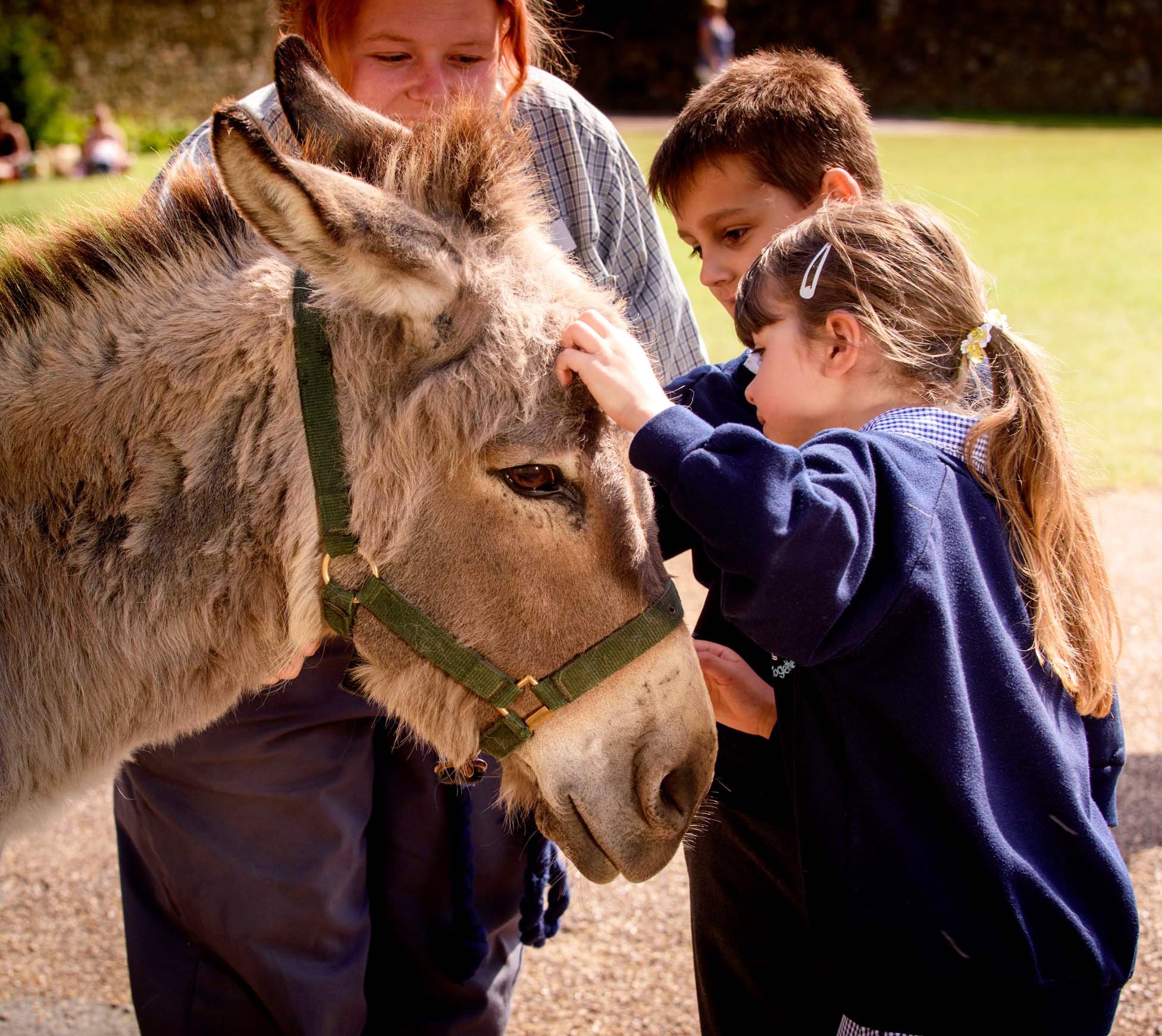
Meet the Carisbrooke Donkeys
Meet our iconic resident donkeys and discover more about how donkeys were used to provide fresh water to the castle's inhabitants in the past .
-
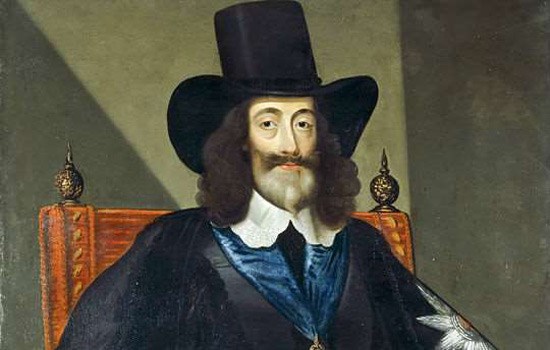
Charles I: A Royal Prisoner at Carisbrooke Castle
Read more about Carisbrooke's most famous prisoner, Charles I, and discover how his escape attempts and political manoeuvrings ultimately sealed his fate.
Suggested Activities
-
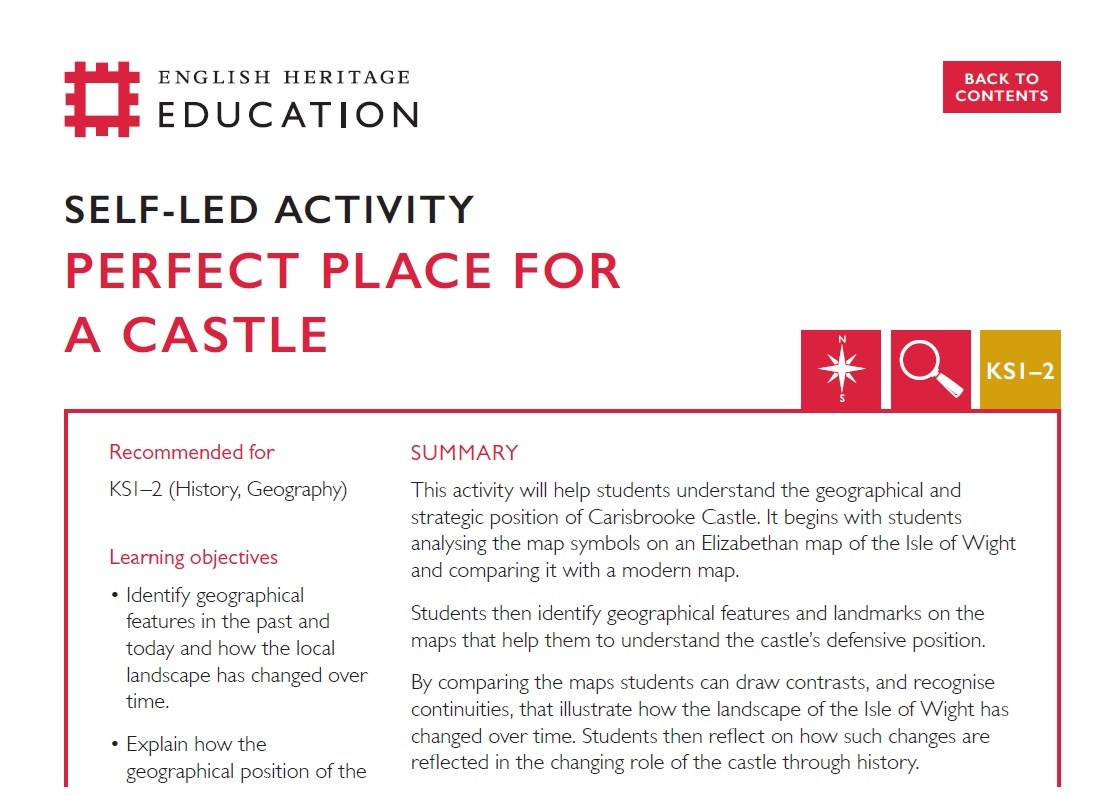
Perfect Place for a Castle (KS1-KS2) - Carisbrooke Castle Teachers' Kit
Understand the geographical and strategic importance of Carisbrooke Castle with this map-based activity.
-
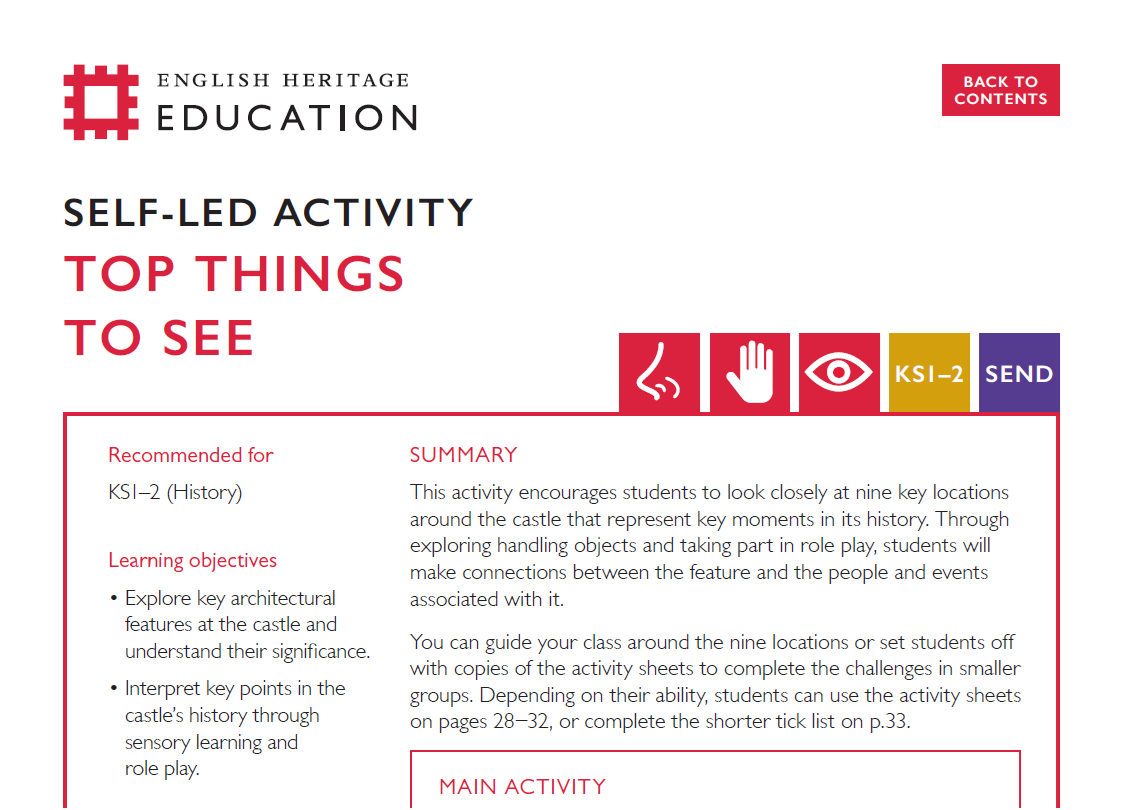
Top Things To See (KS1-KS2, SEND) - Carisbrooke Castle Teachers' Kit
Use handling objects and role play to explore the key locations around Carisbrooke Castle that reveal its history.
-
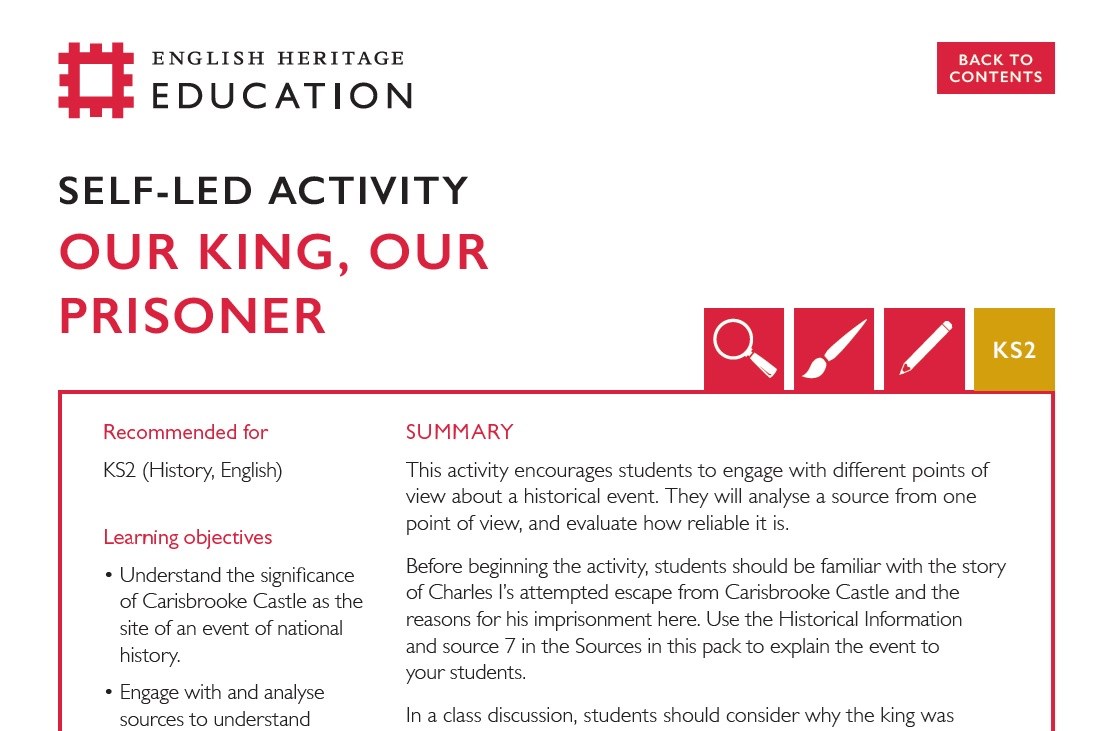
Our King, Our Prisoner (KS2) - Carisbrooke Castle Teachers' Kit
How did Charles I feel during his imprisonment at Carisbrooke Castle? Imagine life as a king in prison using a first-hand account as inspiration in this immersive activity.
-
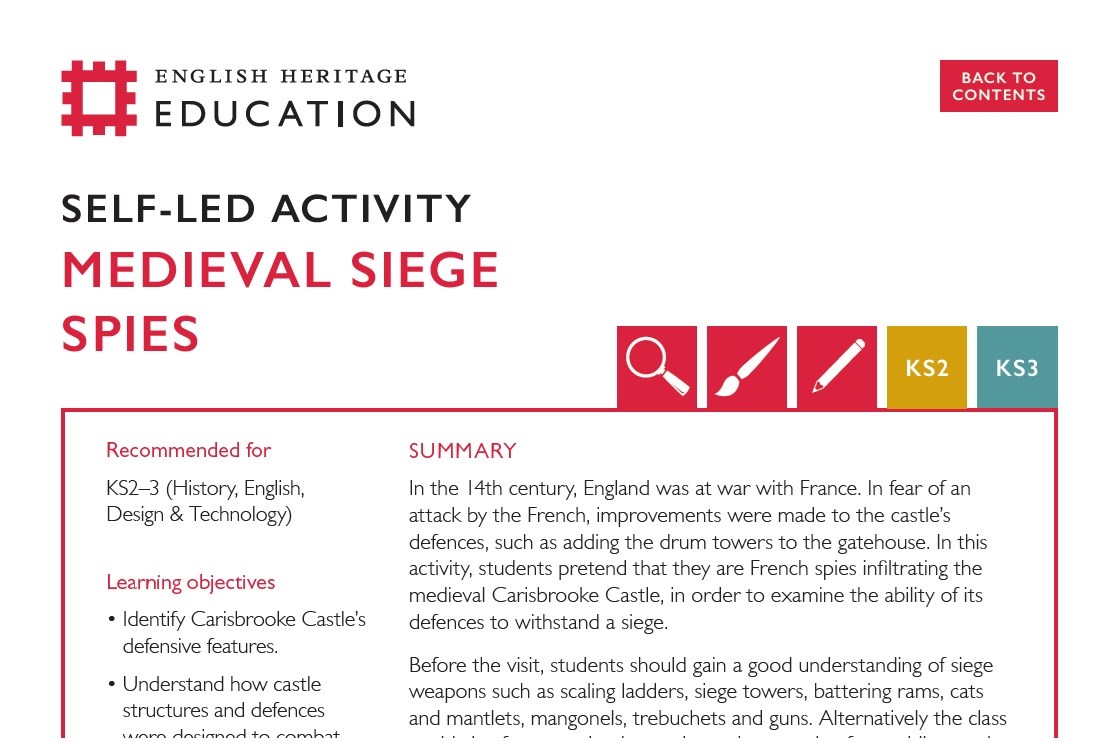
Medieval Siege Spies (KS2-KS3) - Carisbrooke Castle Teachers' Kit
Take on the role of a French spy during the Hundred Years War to find out more about Carisbrooke Castle's medieval defences and determine whether they could withstand a siege.
Video Resources
-
A Mini Guide to Medieval Castles
Watch our short animation to find out more about English castle design developed over time.
-
Postcard from Carisbrooke Castle
Take to the skies over Carisbrooke to discover its medieval and Tudor defences, as well as later additions like Princess Beatrice's garden.
-
History at Home Live! Castles
Join Ben Shires and our expert Jeremy Ashbee to develop your understanding of castles and the people that lived in them.
-
History at Home Live! Castles (Part 2)
Join Ben Shires and our expert Jeremy Ashbee as they talk more about castles and how they developed over time.
Link Your Learning
ENGLISH - Choose an event in Carisbrooke Castle’s history or a specific person connected with the castle to inspire your own poetry.
MATHS - Use geometric shapes to design a garden like Princess Beatrice’s at Carisbrooke Castle. You could use your design as the basis for growing your own mini-garden.
SCIENCE - Find out more about donkeys and consider how their characteristics made them suitable for working the waterwheel at Carisbrooke.
GEOGRAPHY - Survey the area around Carisbrooke Castle by sketching the local landscape from the wall walk during your visit, using satellite view, or our drone footage on YouTube. What do you think are the most important features around the castle today? Would these have existed when the castle was first built?
ART & DESIGN - Tourists in the 19th century were keen to visit Carisbrooke Castle and view the romantic ruins. Research the Romantic Movement and use the style to create your own artwork inspired by Carisbrooke Castle.
DRAMA - Create a living timeline using short small-group performances of big moments in Carisbrooke Castle’s history to help students understand change over time on the Isle of Wight. Use the timeline and historical information in our Teachers’ Kit to help you decide which events to cover. You might explore the initial building of the castle by the Normans, its involvement in the Hundred Years War, Charles I’s imprisonment during the English Civil War, and the castle’s transition into a tourist attraction.
Visiting Carisbrooke Castle
Find Out More'There is nothing like first-hand experience to bring teaching to life. Education visits ensure lasting memories and open up learning in a way which can enrich and enhance pupils understanding, giving them an experience that truly takes them back in time.
Carisbrooke Castle has played a central role in the history of the Island for over 1,000 years. From fortress to grand residence it has stories to tell that have shaped the Island’s history. Find out about Countess Isabella, a rich a powerful medieval noblewoman, or discover the real story behind King Charles I and his attempts to escape from the Castle. Visit the donkeys who have their own tales to tell about why they were part of the Castle’s defences. From Anglo Saxon times to the present day the rich history of Carisbrooke Castle provides ample opportunity for local study.
Entry to Carisbrooke Castle is free for your class and we also offer a free planning visit, as well as a variety of downloadable resources to help with your students’ learning before, during and after your trip. You can also delve deeper into the history of the castle with our expert-led Discovery Visits, which bring the history of the castle to life. I’m here to help, so please do get in touch if I can help with your visit to this very special castle.'
- Laura Bosworth, Education Visits Officer (Hampshire & Isle of Wight)
More to Explore

